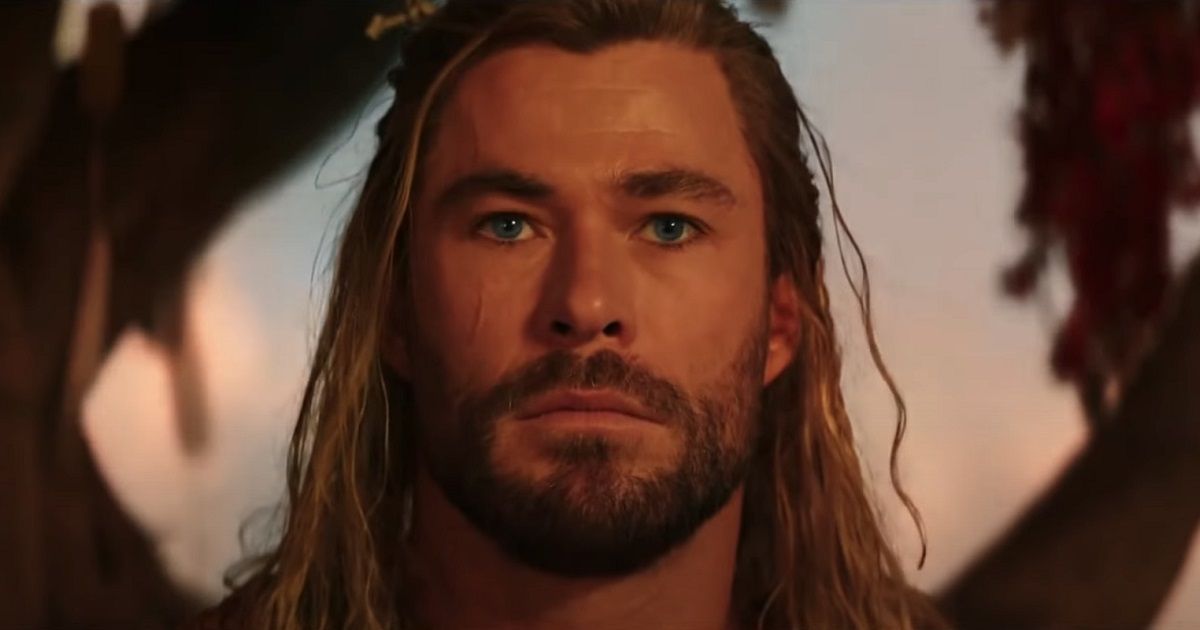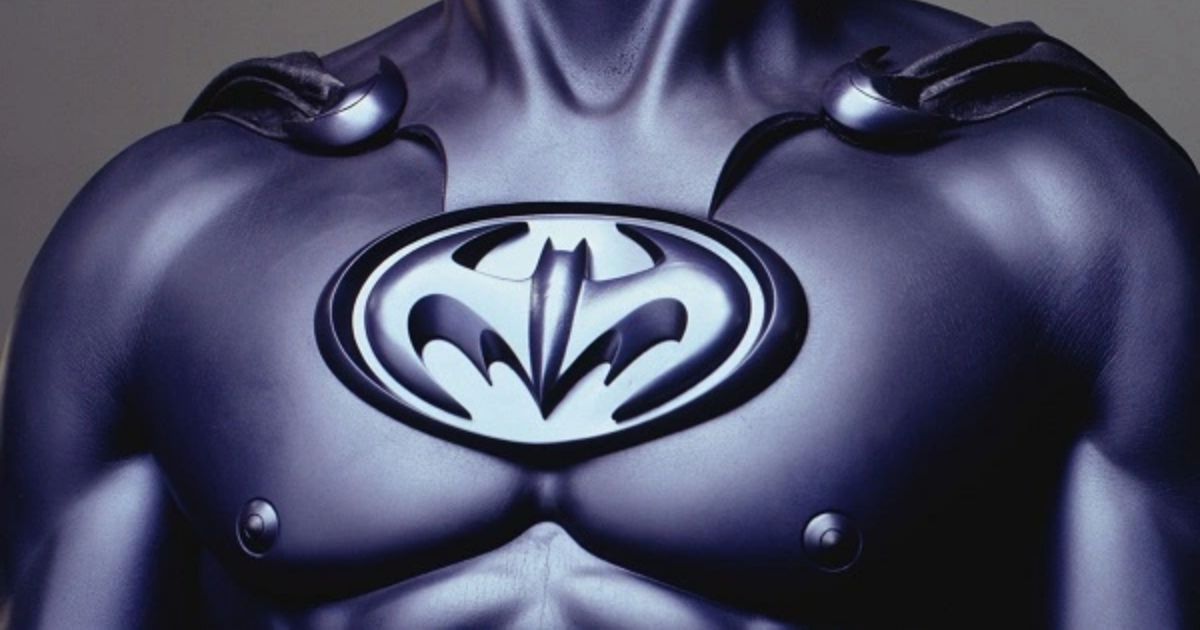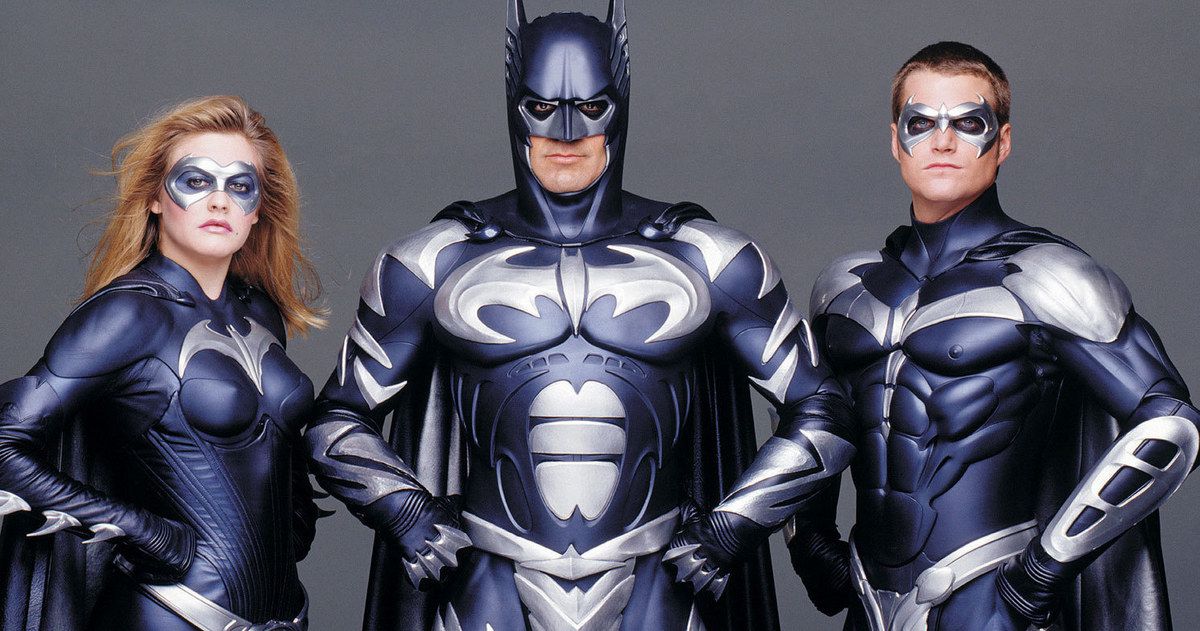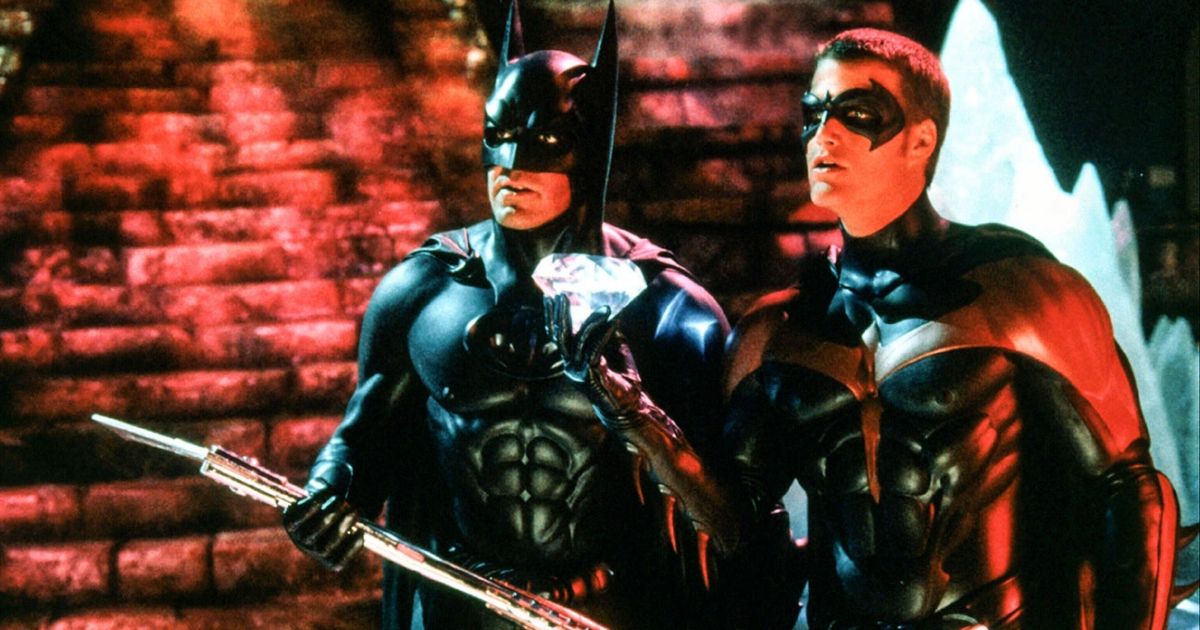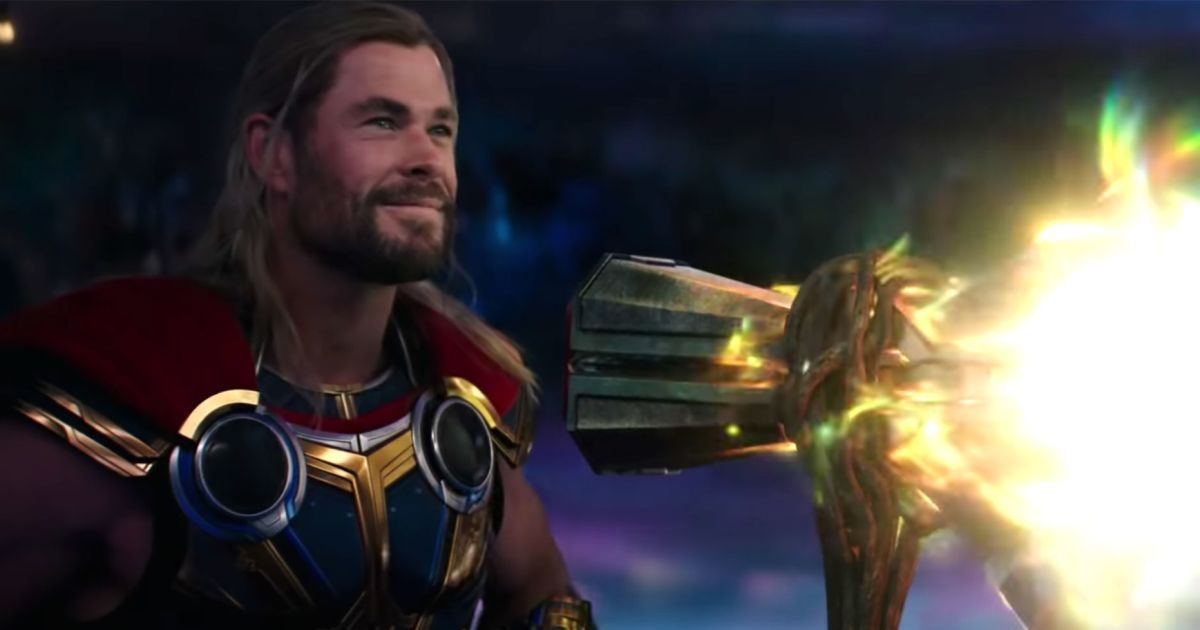#Love and Thunder the MCU’s Batman & Robin?
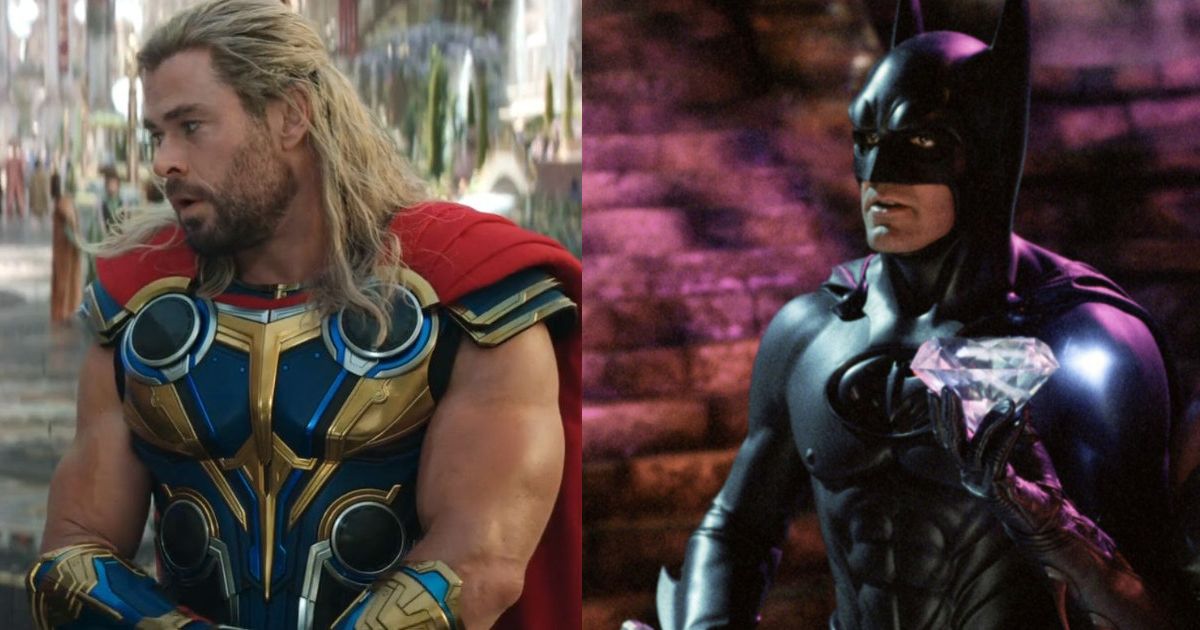
Table of Contents
“Love and Thunder the MCU’s Batman & Robin?”
In fact, the critical and audience reaction is one of the lowest for an MCU film, which have in the past been not only reliable financial hits but audiences favorites. Yet the reaction to Thor: Love and Thunder is closer to Thor: The Dark World than Thor: Ragnarok, and follows a recent trend of MCU entries that have not been able to connect with wider audiences in the way past films could. While it is not likely going to destroy the MCU, it is cause for concern and is very similar to another infamous superhero film: Batman & Robin.
Thor: Love and Thunder = Batman & Robin?
Batman & Robin was released in 1997 and reunited much of the creative team that worked on Batman Forever, one of the biggest films of the 1990s despite generally negative reviews, and was set to be the next exciting chapter in the Batman franchise. However, audiences and critics hated it and the film became a pop culture punching bag for generations, and is often regarded as one of the worst superhero movies of all time. It not only killed the Batman franchise at the time but almost the entire superhero movie genre.
While there are surface-level similarities between Thor: Love and Thunder and Batman and Robin, from both being the fourth film in a superhero solo entry, both movies featuring ‘and’ in the title, and both feature a central villain who is motivated by a loved one’s tragic ending but where both villains eventually realize the errors of their way and finding their humanity. The similarities between Thor: Love and Thunder and Batman & Robin run much deeper, and if history repeats itself it might be a troubling sign for the MCU.
The Batman Sequel to a Franchise Course Correction
While the comparison between Batman & Robin and Thor: Love and Thunder may seem like a stretch at first, it is important to remember that both films share similar creative origins in that they are sequels to franchise course corrections by bringing back the director who helped revitalize the franchise.
Tim Burton was given more creative control on 1992’s Batman Returns, and while still popular it did not quite reach the same heights as 1989’s Batman. Furthermore, the film was controversial and many found the film too dark for the young audiences it was marketed to, with parents writing angry letters, particularly at McDonald’s for its Happy Meal tie-in. Warner Bros. opted not to bring back Tim Burton for the third Batman film and instead brought in Joel Schumacher to helm Batman Forever.
While Schumacher originally wanted to make a darker story, hoping to adapt Frank Miller’s Batman Year One, the studio wanted something lighter and more all-ages appropriate, aiming for a big budget update of the 1960s Adam West series with villain team-ups, crazy plans, and the introduction of the fan-favorite character Robin. Batman Forever opened in theaters on June 16, 1995, and was a box office sensation and seemed to get the Batman franchise back on track even if critics weren’t wild for it, so it made sense for Schumacher to return for the sequel.
The Thor Sequel to a Franchise Court Correction
The Thor films were almost in the exact same situation. While the first Thor still had comedic elements, both it and its sequel Thor: The Dark World, as well as the two Avengers movies the character was in at the time, painted Thor as a more serious character. By 2015, he seemed to be trailing the popularity of Iron Man, Captain America, and the recently introduced Guardians of the Galaxy. After the poor critical and fan reaction to Thor: The Dark World, Marvel Studios realized they needed to rethink Thor.
In a pivot away from the style of the two previous directors, Kenneth Branagh and Alan Taylor, Marvel Studios hired Taika Waititi is known for quirky comedies like Boy, What We Do In The Shadows, and Hunt for the Wilderpeople. While Waititi wasn’t what one would think of as a Thor director, his laid-back comedic approach to the character was just what the franchise and character needed, as Thor: Ragnarok earned some of the best reviews in the MCU and grossed $853 million worldwide, a massive improvement on both previous Thor films, and even outgrossed 2017’s Justice League. Thor seemed to finally have found his groove, and Marvel Studios capitalized on it by greenlighting a fourth Thor film, making him the first solo Marvel superhero to receive four solo films.
Both Movies Turned Audiences Off With More of the Same
Both Batman & Robin and Thor: Love and Thunder were highly anticipated sequels before their releases, and each had huge opening weekends. Yet word of mouth from audiences and critics was less kind. A common complaint about both films is that they essentially double down on what made the previous film work without providing anything different.
For Batman & Robin, that meant going more in the direction of the 1960s Adam West television series. This resulted in dialing up the camp factor, Arnold Schwarzenegger’s Mr. Freeze speaking primarily in ice puns, and a tongue-in-cheek vibe towards the material. At the time this made a certain amount of sense, as audiences were likely somewhat nostalgic for the Adam West series, and the more kid-friendly approach worked for Batman Forever. However, the pendulum might have swung too much, where it was seen as a farce and making fun of the material, both the comics and the 60s series, instead of a loving adaptation of either.
Thor: Love and Thunder increased the comedy of Thor: Ragnarok, with more jokes often giving the vibe of a sketch comedy or an improv group tying together the plot (which makes sense, considering just how much improvisation went on during production). However, the comedy clashes with the source material that the film is adapting, primarily the dark Gorr the God Butcher story and Jane Foster’s Mighty Thor storylines from the comics, which are a much more serious affair.
On paper, it seemed like the right call: Waititi’s version of Thor likely saved the character in the eyes of mainstream audiences, and the director’s previous film Jojo Rabbit was able to blend a deadly serious and important subject with absurdist and eccentric comedy to great results. However, the end feels like extended comedy bits and doubling down, so if the screaming goats were not funny for someone the first time they aren’t going to like them the seventh time.
Both Films Have Weird Tonal Balances
Aside from both being the fourth solo film for a superhero and being the sequel to a course correction entry, another interesting element both films share is a strange tonal balance. Batman & Robin and Thor: Love and Thunder both focus on comedic elements while also featuring a major character suffering a life-threatening disease which clashes with the overall tone.
In Batman & Robin, Alfred (Michael Gough) is dying from a mysterious disease called McGreggor Syndrome which also happens to be what Mr. Freeze’s wife is suffering from. Batman, Robin, and Batgirl are forced to deal with the likelihood that Alfred may die, but the trio is able to save him thanks to the help of Mr. Freeze. Thor: Love and Thunder features Jane Foster (another good Natalie Portman performance) dying from cancer, and the use of Mjolnir is both making her stronger but draining her life and the chemo out of her body, making the cancer worse. Unlike Alfred, Jane Foster does die.
A film can juggle a variety of tones, but it does become hard to take the more dramatic moments seriously when the rest of the film has been winking and trying to make the audience laugh throughout. In Batman & Robin, the subplot of Alfred dying feels at odds with the throwback nature toward the 1960s series, while in Thor: Love and Thunder the cancer storyline seems disconnected from both the loose comedy and the dark main villain, and feels worthy of a story on its own.
Both Films Opened Big But Dropped in Their Second Weekend
While it is still too early to judge exactly how Thor: Love and Thunder will perform at the box office, there is a striking similarity to the box office opening and second weekends of both it and Batman & Robin. Both films opened at number one, with Batman & Robin bringing in an impressive $42 million in 1997, although thatt was lower than Batman Forever‘s $52 million just two years prior.
Thor: Love and Thunder opened to $143 million on its opening weekend, an improvement over Thor: Ragnarok and the third-biggest opening weekend of 2022 behind only Doctor Strange in the Multiverse of Madness and Jurassic World: Dominion. Yet the film did receive a lower CinemaScore, had an 80% drop off in ticket sales by the next Friday, and in its second weekend is projected to fall about 68%. While the MCU films have been famously front-loaded, this suggests word of mouth for the film has not been particularly strong, especially compared to Thor: Ragnarok.
What Comes Next For Thor
Batman & Robin had disastrous impacts on not just its franchise but the wider superhero movie market. Warner Bros. originally intended for Schumacher to return for a fifth film titled Batman Triumphant, which was later shelved. Batman would see an eight-year film hiatus as Warner Bros. figured out what to do with the character, before releasing Batman Begins in 2005, which marketed itself as being totally different from what came before. Batman & Robin made superhero movies less appealing to studios, and the ones that would be released (like Blade and X-Men) downplayed their comic book roots, with suits closer to The Matrix than the original comics. The genre wouldn’t see a full revival until Spider-Man in 2002. However, even all these years later, Batman & Robin still hangs over the popular superhero genre.
Thor: Love and Thunder is in a different situation. While the film might be a disappointment to fans, due to the output of Marvel Studios, the film cannot immediately stop other MCU superhero films. After all, Black Panther: Wakanda Forever, Ant-Man and the Wasp: Quantumania, Guardians of the Galaxy Vol. 3, and The Marvels are already filming or in post-production. Any films in pre-production like Blade, Fantastic Four, and Captain America 4 can be adjusted to not make the same mistakes as Thor: Love and Thunder. Also, shortly after Thor: Love and Thunder opened in theaters, Ms. Marvel aired its season finale and was one of the best-reviewed entries in the larger franchise, so the blow was softened. That’s one upside of a cinematic universe: with so many moving parts, it’s okay if one stands still.
However, it is worth noting that Thor: Love and Thunder is one of many Phase 4 entries (alongside Black Widow, Eternals, Doctor Strange in the Multiverse of Madness, and Moon Knight) that show a trend of recent projects being more polarizing and divisive than previous MCU entries. Some audiences have criticized a lack of an overall plan for Phase 4, with no apparent direction for the franchise. It will be a while until it is known how badly, if any, Thor: Love and Thunder impacted the wider MCU, but this could be a turning point for the franchise and not in the way the studio expected.
If you liked the article, do not forget to share it with your friends. Follow us on Google News too, click on the star and choose us from your favorites.
For forums sites go to Forum.BuradaBiliyorum.Com
If you want to read more Like this articles, you can visit our Social Media category.
